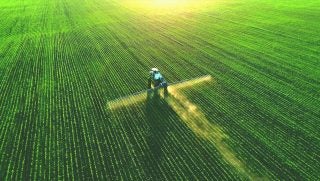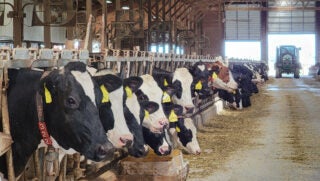Karen Searle is a native Montanan with ranching roots. Some might call her a travel coordinator, others a professional matchmaker. For those that are far removed from rural ranch life and want to saddle up on their next vacay, Searle is their connection to experiencing the Old West.
“I know these ranchers personally, they are my friends and neighbors, and I understand what makes each of them unique,” Searle said. “My goal is to match guests with a ranch that will give them the authentic ranching experience, adding emphasis to the areas they find most interesting, and introduce them to people who will become ‘family’ during their visit.”
Searle owns and operates Montana Bunkhouse Working Ranch Vacations, a collaborative effort with 20 Montana ranches. Many of the ranches are fourth and fifth generation, first established by the early pioneers to the Rocky Mountains and the plains of Montana. While the ranches are first and foremost about production agriculture, Searle said they are all deeply invested in the heritage of Montana ranching.
“Through their involvement with the Montana Bunkhouses, ranch families share their ranching way of life, contribute to the cultural history of the Yellowstone region, and through the Montana Bunkhouse collaboration, make a few dollars too,” Searle said.
Searle first came up with the agri-tourism idea after she was selected as a representative to the 2002 World Congress on Rural Women and Rural Issues in Spain. After seeing how the European Farm Holiday program works, she came home and started the Montana Bunkhouse Working Ranch Vacations, the first agri-tourism cooperative of cattle ranches in the United States.

Since starting the business 15 years ago, the ranches have been featured in newspapers in places as far away as New York, Chicago, and Sidney, Australia. Respected travel magazines such as Condé Nast Traveler and the Sunset have featured the vacation spot and Montana Bunkhouses has also been included in National Geographic’s GeoTourism MapGuide of the Greater Yellowstone area for meeting their national criteria of authenticity for experience, culture, and heritage.
“I see agri-tourism as a way to help preserve family ranches and to narrow the divide between ranch and city dwellers on land use, and wildlife issues,” Searle said. “Those objectives have put Montana Bunkhouses on the forefront of a trend in the travel industry labeled ‘geo-tourism’ — travel that sustains or enhances the character of a place, helping to preserve its heritage, habitats, and scenic beauty.”
Mike Leffingwell’s ranch is no stranger to the geo-tourism industry. His grandparents started taking guests at the G BAR M ranch in 1935.
“Growing up in the business it became a passion of mine to educate the general public on what it takes to run a cow outfit in Southwest Montana in this day and time,” Leffingwell said.
Today Leffingwell, his wife Maria and daughter Mary run 150 head of cattle over 60,000 acres of owned and leased land on G BAR M ranch – all on horseback. During a typical week, the family will ride twice a day, six times a week to check and move cattle.

“I see a lot more country than most people on normal ranches do,” Leffingwell said.
Those long days and short nights are one of the reasons Leffingwell decided to join Montana Bunkhouses. Searle has been able to lighten the ranch’s office work by fielding questions, promoting the operation, and helping set up reservations.
Leffingwell has since expanded his agri-tourism season from mid-April to the first part of October and Searle has kept the ranch full of visitors. He estimates 80 percent are return guests. A family from California has been coming for four generations, a couple from Britain has been booking two weeks in the spring and another two in the fall at G BAR M ranch for the last 15 years, and a gentleman from North Carolina has helped Leffingwell round up cattle for three weeks every fall for the past seven years.
The agri-tourism business has also allowed Leffingwell to diversify his small operation and bring in extra income. Between joining Montana Bunkhouses Working Ranch Vacations and housing hunters on his own, Leffingwell says opening up his ranch to guests brings in anywhere from $125,000 to $150,000 per year.
But Leffingwell said more importantly, it has provided an opportunity for him to educate the public and debunk myths about ranch life and beef production.
“One of the aims or goals for me as we are doing things here is to make sure that there is a lot of education going into what we are doing,” Leffingwell said. “We do our best to educate people as much as possible on food production.”
But Leffingwell said the agri-tourisms sector isn’t something any ranch should add to their operation.
“Anybody with the right personality will get along great with this. Anybody with the wrong personality will have a big wreck. It takes a lot of patience and a real commitment to doing a good job with the people you have there while you are trying to hay, calve and run the agricultural part of the operation,” Leffingwell said. “It takes a lot of forethought. It isn’t for everybody, but if somebody enjoys people and is not afraid of hard work — because it is a lot of hard work — it’s a very beneficial operation.”
Searle said the other 19 ranches involved in Montana Bunkhouses would agree.
“The benefit is not just measured in dollars and cents. We enjoy sharing our way of life,” Searle said. “It jogs us off-center, so we don’t simply take for granted what we’ve been born to do because now we see our ranching world through our guest’s eyes and it brings us joy.”



